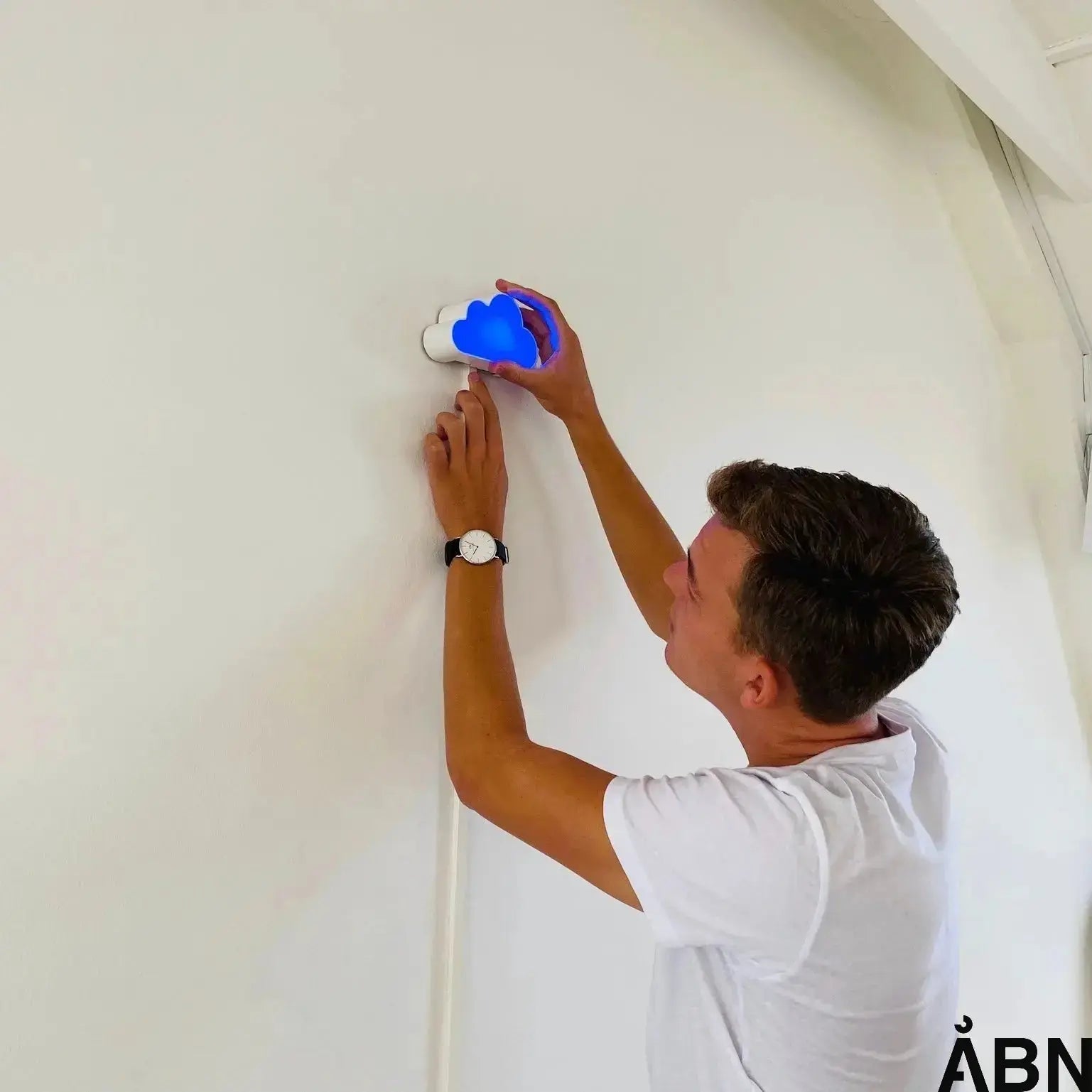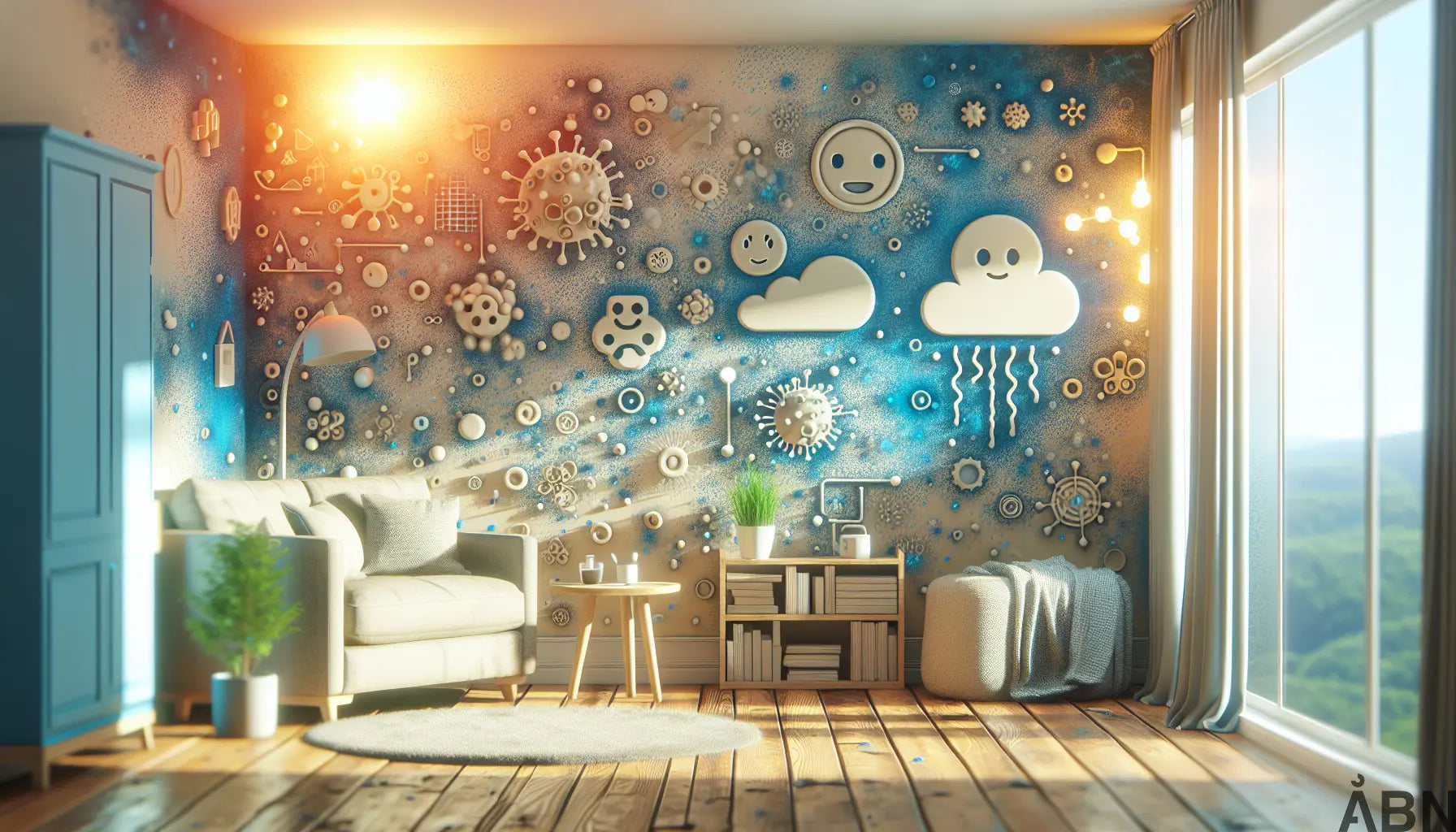Can you get sick from mold?
Imagine breathing in a room every day where an invisible enemy is slowly affecting your health. It might smell a little earthy, hide behind the wallpaper or in the corner of the ceiling – and you might not even see it. But it’s there. Mold. And yes, it can make you sick.
Mold is not just a cosmetic problem or an unpleasant odor. It is a real health risk that both professionals and parents should take seriously. In this article, we delve into how mold affects health, who is most at risk, and how to prevent and manage the problem – with the help of modern technology and behavioral changes.
What is mold – and why does it occur?
Mold is a microscopic fungus that thrives in damp and poorly ventilated environments. It is naturally found in our surroundings, but when allowed to grow indoors – on walls, ceilings, floors or furniture – it can become harmful to your health.
Moisture is the primary cause of mold. It can be caused by water damage, leaking roofs, poorly insulated walls, or simply inadequate ventilation. When moisture is allowed to build up, it creates the perfect conditions for mold to grow.
How does mold affect health?
According to the Danish Health Authority's recommendations from March 2025, staying in buildings with damp and mold can lead to a number of health problems – especially for people with allergies, asthma or a weakened immune system. The symptoms range from mild discomfort to serious illnesses:
- Irritation of the eyes, nose and throat
- Headache and fatigue
- Cough and difficulty breathing
- Worsening of asthma and allergies
- Development of chronic diseases such as COPD
TV 2 News reported in July 2024 that people living in damp homes often experience confusion, difficulty concentrating and worsening of existing respiratory diseases. So it's not just a feeling - mold can be felt in the body.
The invisible enemy at home and at work
Mold is like an invisible guest that slowly settles into the body. According to DIGURA, symptoms such as hoarseness, itchy eyes and difficulty concentrating can be signs of mold – especially if they only occur when you are at home or at work.
For children in schools and daycare centers, it can mean reduced well-being and learning. For employees in office environments, it can lead to increased sick leave and lower productivity. And for facility managers and municipal decision-makers, it is a challenge that requires both insight and action.
Who is most at risk?
Although anyone can be affected by mold, some groups are more vulnerable:
- Children and the elderly
- People with asthma or allergies
- People with a weakened immune system
- Pregnant
For these groups, even low exposure over time can lead to serious health problems, so it is crucial to identify and remove mold as early as possible.
How do you detect mold?
Mold isn't always visible. It can hide behind walls, under floors, or in ventilation systems. But there are signs to look out for:
- A musty or earthy smell
- Visible spots in black, green, or white color
- Damp or cold walls
- Recurring health issues in certain rooms
If you suspect mold, you should have a professional assessment done. It's not enough to just paint over it – the problem must be found and eliminated at its root.
How do you prevent mold?
Prevention is about keeping moisture away and ensuring a healthy indoor climate. This requires both technical solutions and changed behavior. At ÅBN, we work to make the indoor climate visible and understandable – so that you can act in time.
Visualization of indoor climate with ÅBN
With the Skyen – ÅBN’s intuitive indoor climate sensor – it becomes possible to see how temperature, humidity and CO₂ levels develop in real time. It’s like getting a weather forecast for your indoor climate. When you see that the humidity is rising, you can take action – open windows, adjust ventilation or identify sources of moisture.
The cloud is not just a sensor – it is part of a larger solution where data, behavioral change and technology go hand in hand. On the Inside platform, you can follow developments over time and gain insight into how the building "breathes".
Behavioral change is key
Technology alone will not solve the problem. It is also about changing habits. Airing out regularly, using the extractor hood, drying clothes outdoors and keeping an eye on damp areas. On ÅBN's page on behaviour change you can read more about how small changes in everyday life can make a big difference.
What do you do if you have mold?
If you suspect mold, it is important to act quickly:
- Identify the source of moisture – it could be a leak, poor ventilation or water damage.
- Get professional help to assess the extent and remove the mold correctly.
- Prevent future problems with better ventilation and monitoring of the indoor climate.
At ÅBN, we help municipalities, schools and private companies understand and improve their indoor climate. We believe that knowledge and data are the key to action – and to a healthier life.
FAQ: Frequently Asked Questions About Mold
How do I know if I have mold in my home?
Typical signs include a musty smell, visible stains and damp walls. If you experience health problems that only occur in the home, this could also be a sign. A professional assessment is often necessary to be sure.
Is mold dangerous for children?
Yes, children are particularly vulnerable to mold as their respiratory tracts are still developing. This can affect their









